How to get Redash on AWS
This section describes how to launch and connect to Redash solution in Amazon Web Services (AWS).
- Open Redash - Make sense of your data to take informed decisions VM listing on AWS marketplace

- Click on Continue to subscribe.
- Login with your credentials and follow the instruction.
- Subscribe to the product and click on Continue to configuration button.
- Select a Region where you want to launch the VM(such as US East (N.Virginia))


- Optionally change the EC2 instance type. (This defaults to t2.medium instance type, 2 vCPUs and 4 GB RAM.)
- Optionally change the network name and subnetwork names.

-
Select the Security Group. Be sure that whichever Security Group you specify have ports 22 (for ssh), 3389 (for RDP) and 80 (for HTTP) exposed.
-
Be sure to download the key-pair which is available by default, or you can create the new key-pair and download it.

-
Click on Launch..
-
Redash - Make sense of your data to take informed decisions solution will begin deploying.
- A summary page displays.To see this instance on EC2 Console click on EC2 Console link.

- On the EC2 Console page, instance is up and running. To connect to this instance through putty, copy the IPv4 Public IP Address
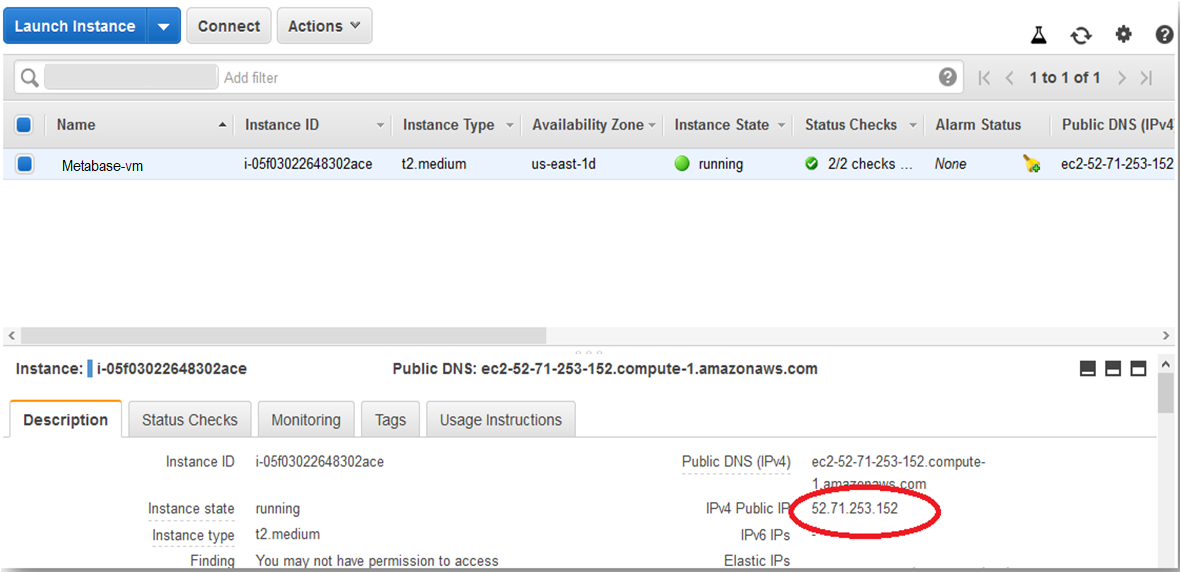
- Open putty, paste the IP address and browse your private key you downloaded while deploying the VM, by going to **SSH- >Auth **, click on Open. Enter ubuntu as userid
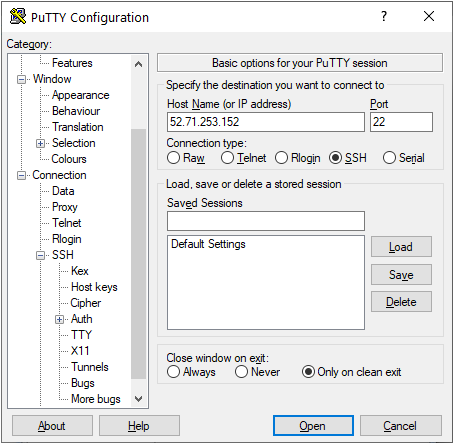
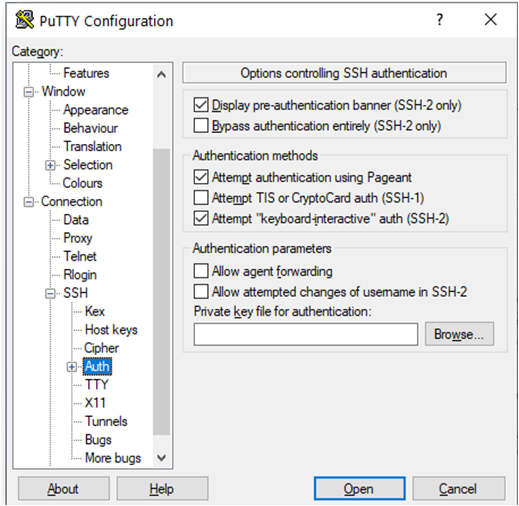
- Once connected, change the password for ubuntu user using below command

- Now the password for ubuntu user is set, you can connect to the VM’s desktop environment from any local Windows Machine using RDP protocol or Linux Machine using Remmina.
From your local windows machine, goto “start” menu, in the search box type and select “Remote desktop connection”. In the “Remote Desktop connection” wizard, copy the public IP address and click connect

- This will connect you to the VM’s desktop environment. Provide the username (e.g “ubuntu”) and the password set in the above “Reset password” step to authenticate. Click OK
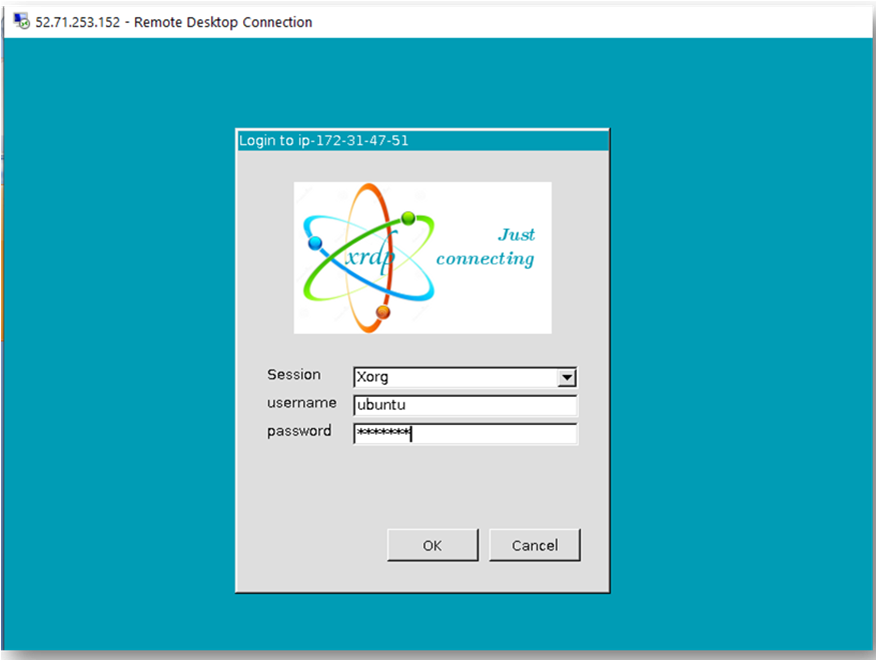
- Now you are connected to the out of box Redash environment via Windows Machine.
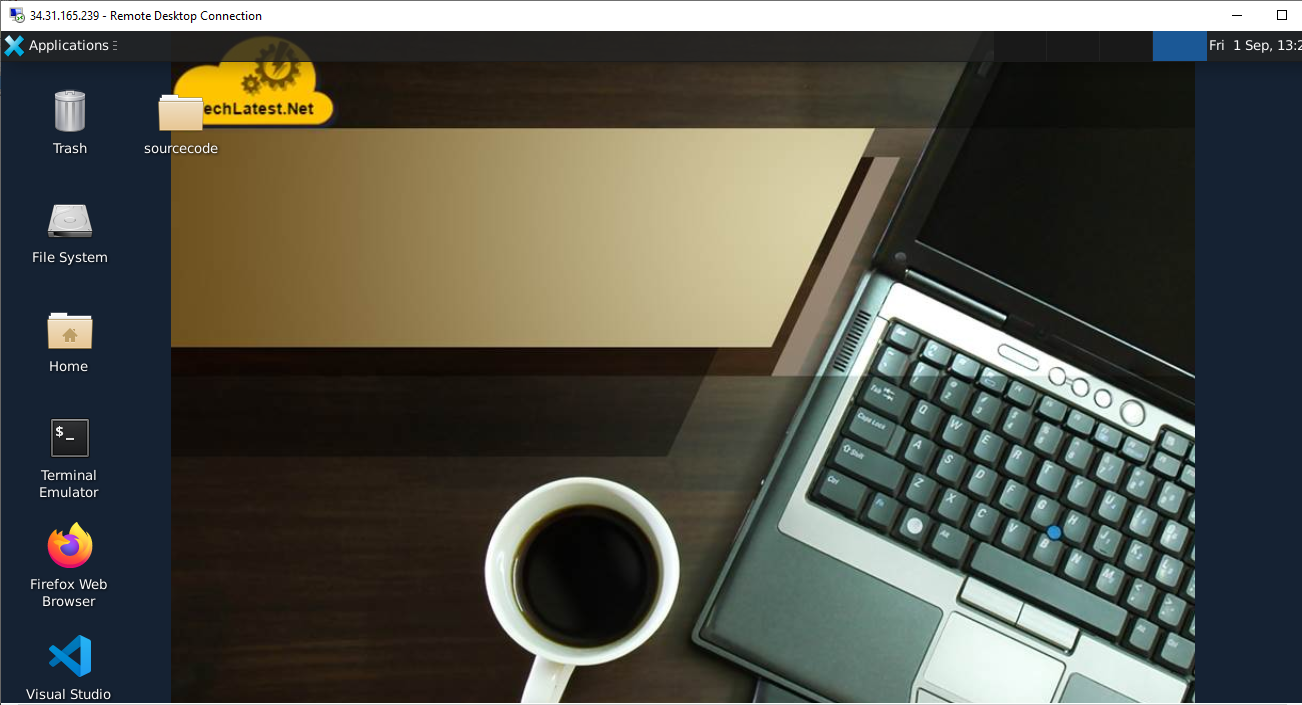
- To connect using RDP via Linux machine, first note the external IP of the VM from VM details page,then from your local Linux machine, goto menu, in the search box type and select “Remmina”.
Note: If you don’t have Remmina installed on your Linux machine, firstInstall Remmina as per your linux distribution.
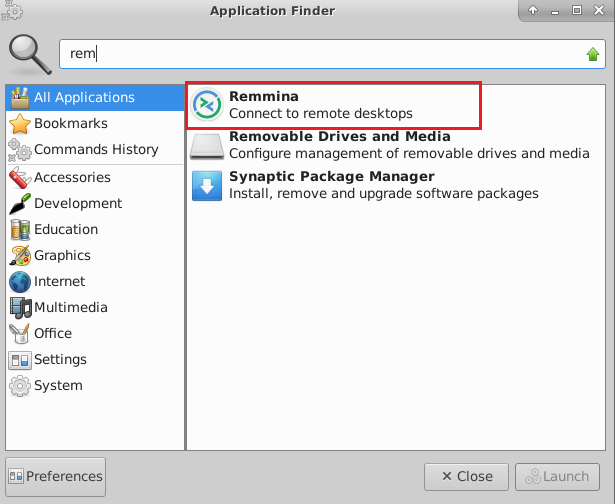
- In the “Remmina Remote Desktop Client” wizard, select the RDP option from dropdown and paste the external ip and click enter.
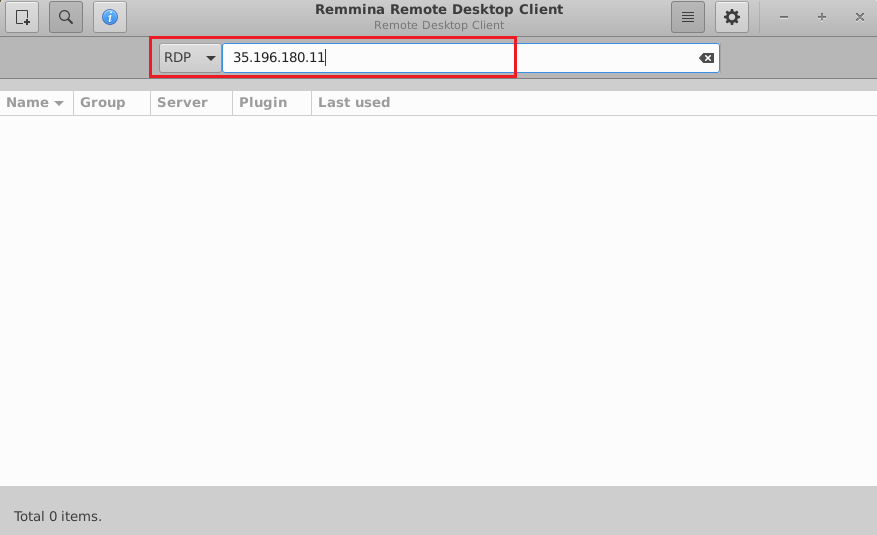 12. This will connect you to the VM’s desktop environment. Provide “ubuntu” as the userid and the password set in above reset password step to authenticate. Click OK
12. This will connect you to the VM’s desktop environment. Provide “ubuntu” as the userid and the password set in above reset password step to authenticate. Click OK
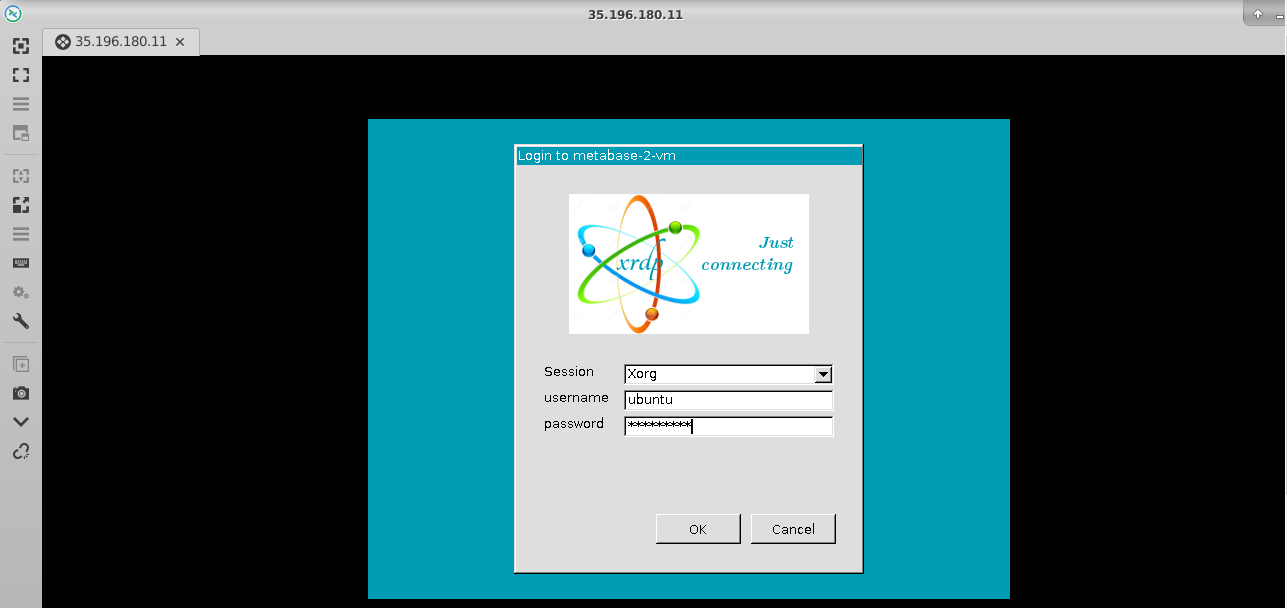
- Now you are connected to out of box Redash environment via Linux machine.

- Once your vm is up and running, you can access Redash setup page by going to http://VM_Public_IP. Provide the basic information on this initial setup page and click on setup button at the bottom.
Note: Please use http and not https in the URL when accessing Redash Web UI, e.g. http ://35.223.255.180
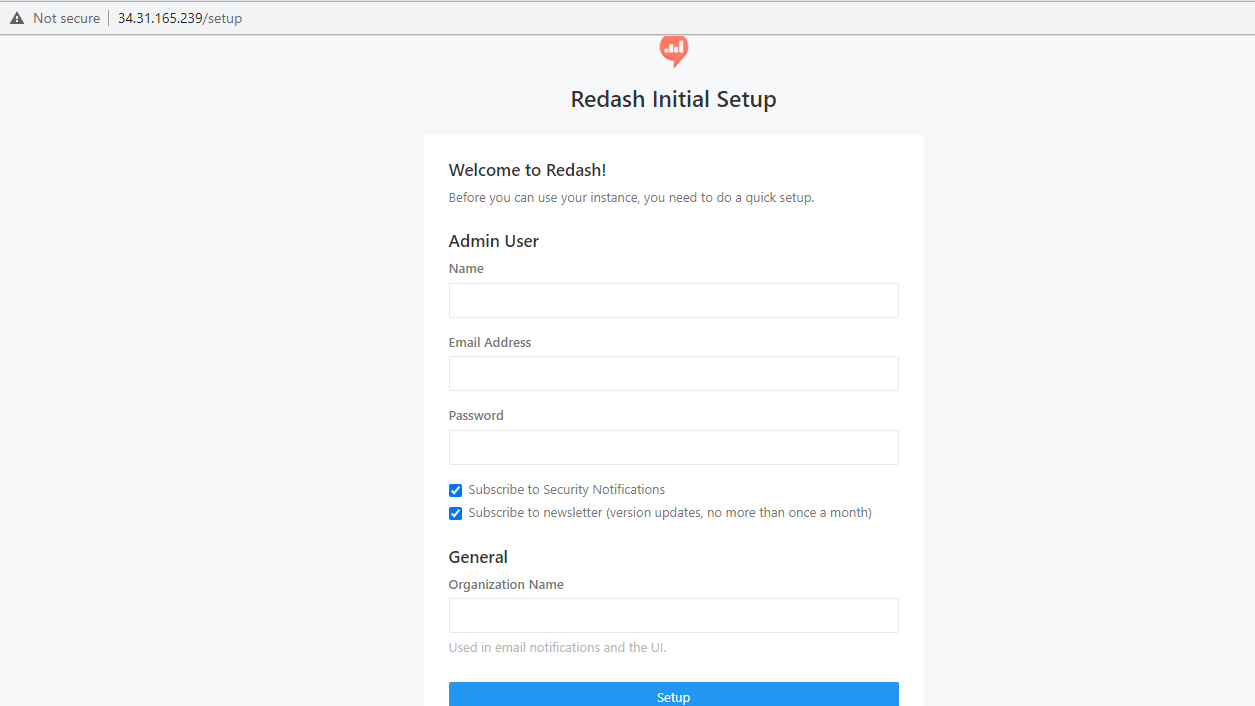
- It will take you to the Redash Home page.
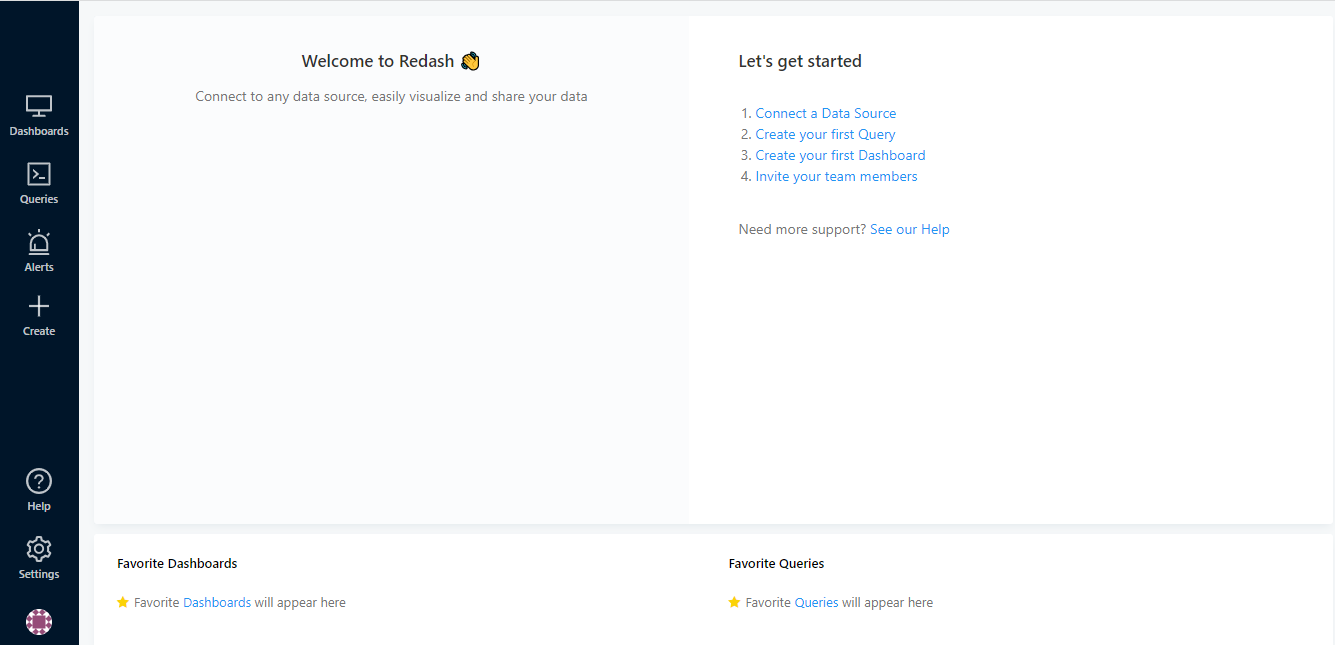
- You can add more users by going to Settings and selecting Users tab.
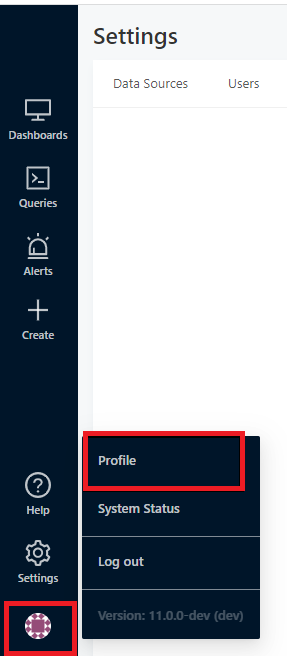

- If for some reason, your Redash Web UI is not coming or showing below proxy error message. Then follow these steps.
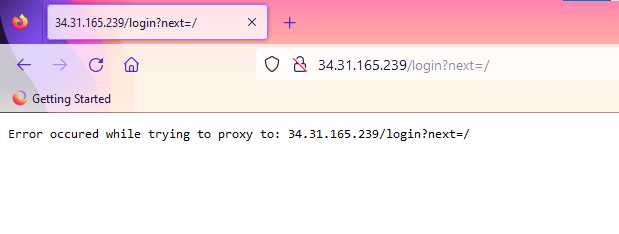
- Connect to VM via SSH and check the container running status by running:

- If the container are in running status then stop them by running
sudo docker stop redash_postgres_1 redash_redis_1 redash_server_1 redash_worker_1 redash_scheduler_1 redash_email_1

- Now again check the status with docker ps -a command as shown above and it should show container status as Exited

- Now start the containers using -
sudo docker start redash_postgres_1 redash_redis_1 redash_server_1 redash_worker_1 redash_scheduler_1 redash_email_1

- Once containers are up and running you can access the Redash Web UI using http://public-ip
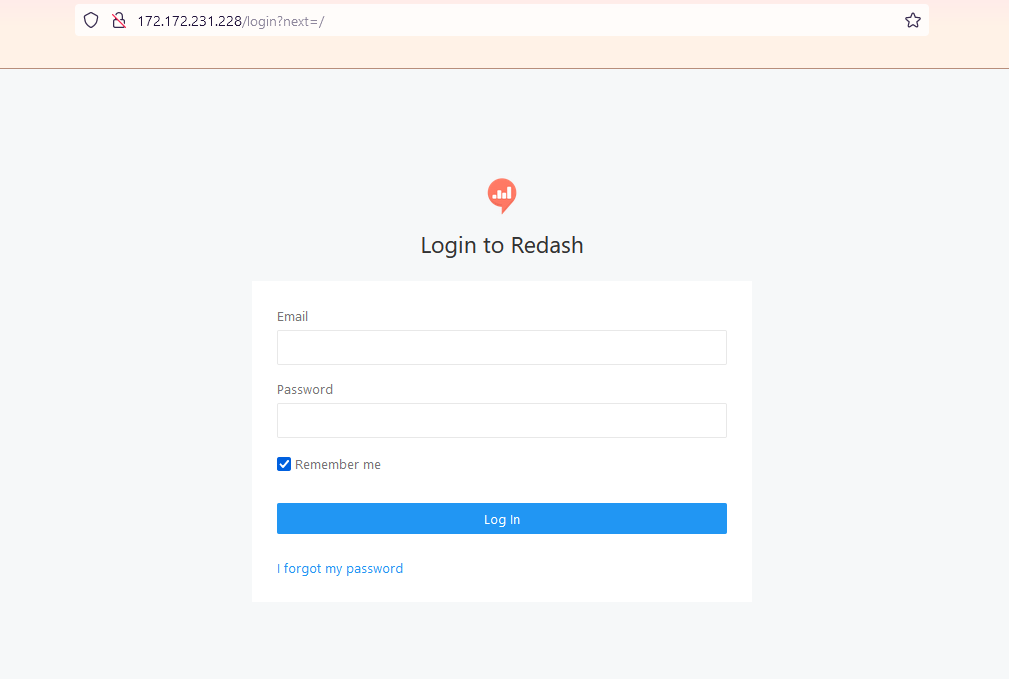














 12. This will connect you to the VM’s desktop environment. Provide “ubuntu” as the userid and the password set in above reset password step to authenticate. Click OK
12. This will connect you to the VM’s desktop environment. Provide “ubuntu” as the userid and the password set in above reset password step to authenticate. Click OK










